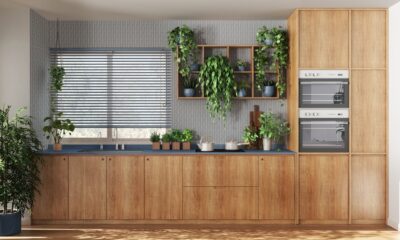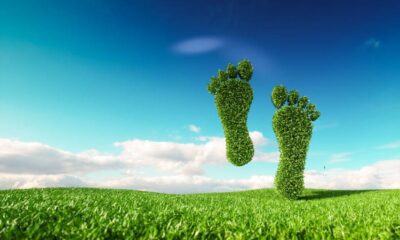

Environment
10 Ways to Lower the Environmental Footprint of Your Kitchen
The average home produces 7.5 tons of CO2 every year. You have to find ways to lower the carbon footprint of every room, including your kitchen.
You probably know that having an eco-friendly kitchen will be much better for the environment. However, you might not know what steps you have to take to make it more energy efficient and minimize the waste of natural resources.
You won’t have an excuse after reading this article. Here are ten tips to renovate your kitchen in the most sustainable way possible.
1. Renovate your kitchen to be more energy efficient
You want to estimate the carbon footprint of your kitchen. It is probably a lot higher than you think.
According to Schwalb Builders, there are a lot of ways to renovate your kitchen to be eco-friendlier. You can change the layout to improve airflow to minimize heat and require less light.
2. Use restored antique furniture
A great way to give your kitchen a vintage look is to give old furniture a second life.
There are many ways to restore antique furniture and there are many professionals who do it very well. We recommend seeing if a restorer can transform it into a new and unique piece, rather than just throwing it away.
It is also a way to get a rustic and classic look that you won’t get with newer furniture.
3. Recycle your trash
While most people appreciate the importance of recycling, they don’t do it nearly enough. However, you can take steps to recycle food waste to make your kitchen eco-friendlier.
You can set up separate garbage cans to sort waste more quickly. This is a great initiative and a step in the right direction if you want an eco-friendly kitchen.
The types of garbage to be separated are plastic waste, paper, glass, organic waste and others.
Currently, there is furniture designed for sorting garbage. In addition to being eco-friendlier, it can also improve the aesthetics of your home.
4. Separate the microwave and oven
Appliances can be rearranged to help save energy. For example, separating the refrigerator from heat-producing appliances such as the oven will make it more energy-efficient. You will be able to keep the temperature low without running an air conditioner.
5. Switch to induction hobs
When choosing a new stove, you need to think about how much energy it will use. Gas and glass-ceramic stoves consume much more energy than those with induction hobs, so you will want to avoid them if you are serious about having an eco-friendly kitchen.
6. Purchase eco-friendly cookware
Cookware may not be part of the infrastructure of your kitchen, but it will play a huge role in the environmental footprint of your kitchen. You want to invest in eco-friendly cookware. If you want to maintain an eco-friendly lifestyle, you must be aware of the type of material that you select when you are purchasing utensils.
The most important thing you need to do is make sure that you don’t have any plastic cookware. There are materials that degrade much easier. Plastic has a lot of harmful chemicals and takes a long time to break down, so it leads to landfill waste problems.
You might want to get aprons and cloths made from organic cotton. It would help if you also got cutting boards and other utensils made from cedarwood. It is also good to get carbon steel and vegetable cellulose for cleaning utensils.
7. Find creative ways to reuse bottles
Glass bottles probably last a lot longer than you expect. Of course, it is better to find bottles made from biodegradable materials, but that is not always feasible. The next best alternative is to find ways to reuse them.
You want to find bottles made with as few toxins as possible and find creative ways to reuse them.
8. Install low-flow faucets
Water is a very precious resource. Unfortunately, our supply of drinkable water is shrinking by the day due to climate change and pollution. You want to use a low-flow faucet to save as much water as possible.
Another option is to install a faucet aerator, which will decrease the flow by increasing airflow at the faucet outlet.
9. Use Energy Star appliances
You should look for appliances with the Energy Star certificate. Homes that use Energy Star appliances use up to 20% less energy than those with traditional appliances.
10. Lighting
LED lightbulbs are better alternatives to traditional bulbs. This is because they use up to 90% less energy. They also last 25 times longer, so you will not waste as much material.






























